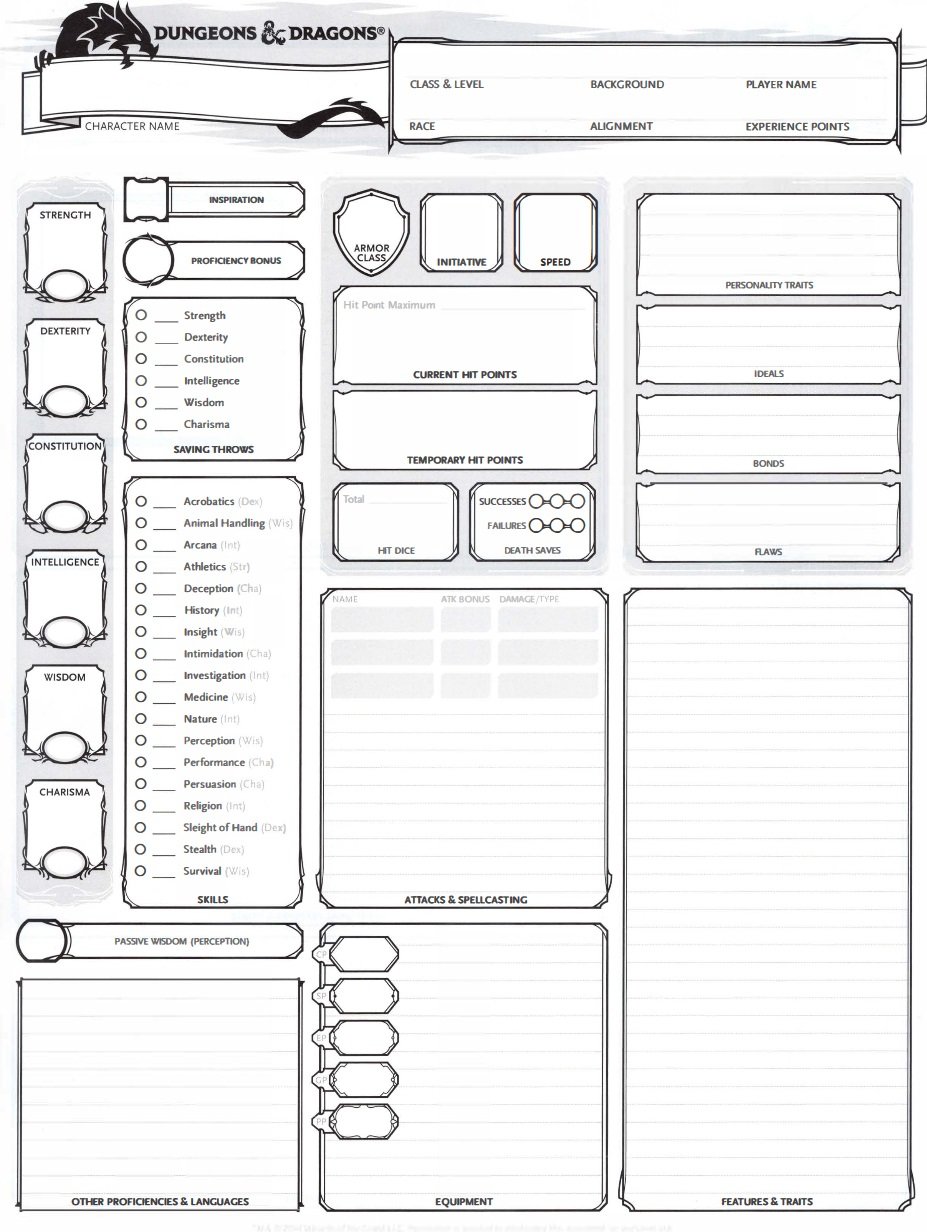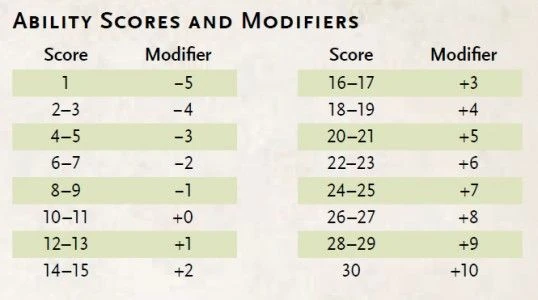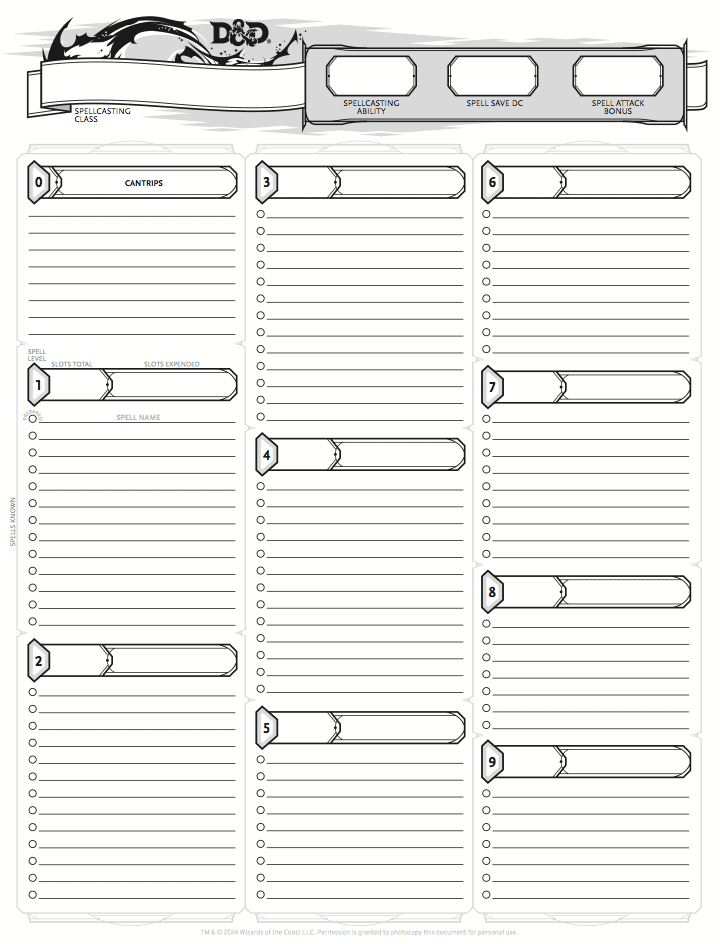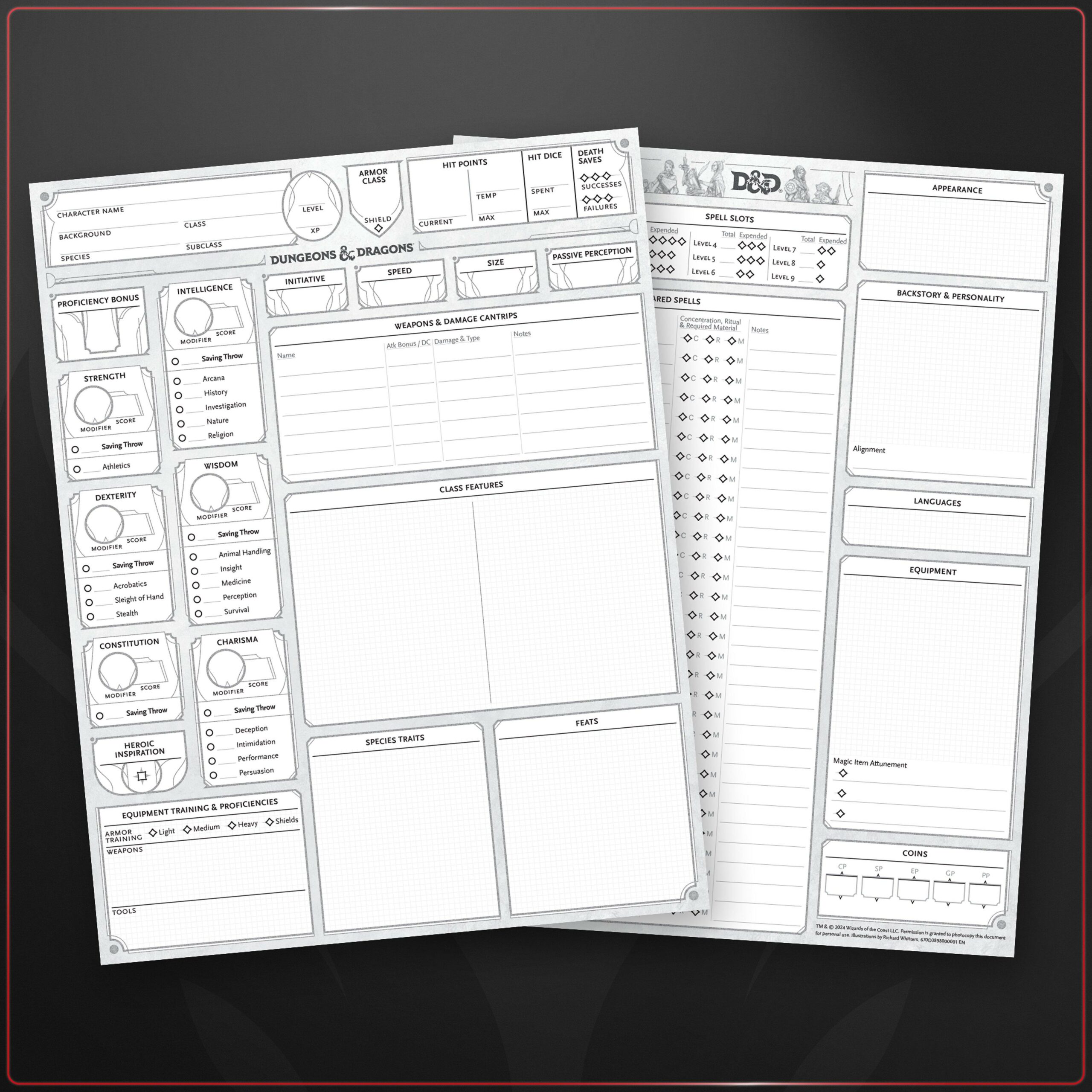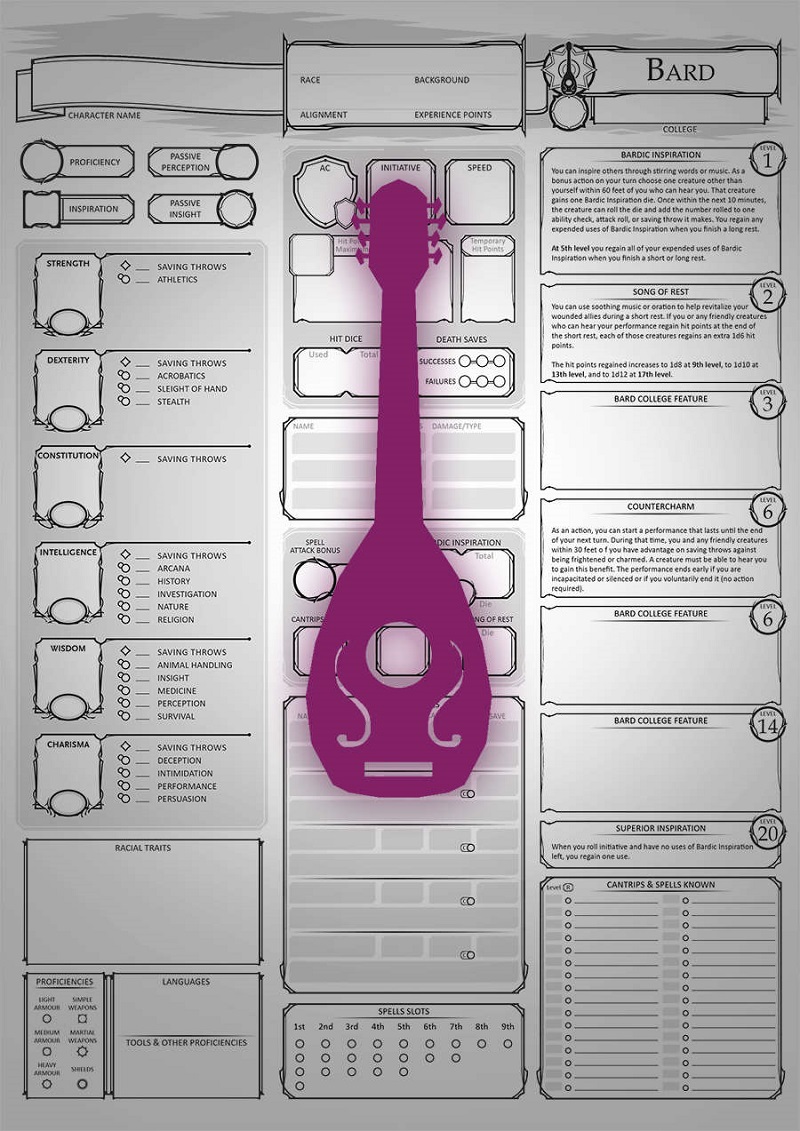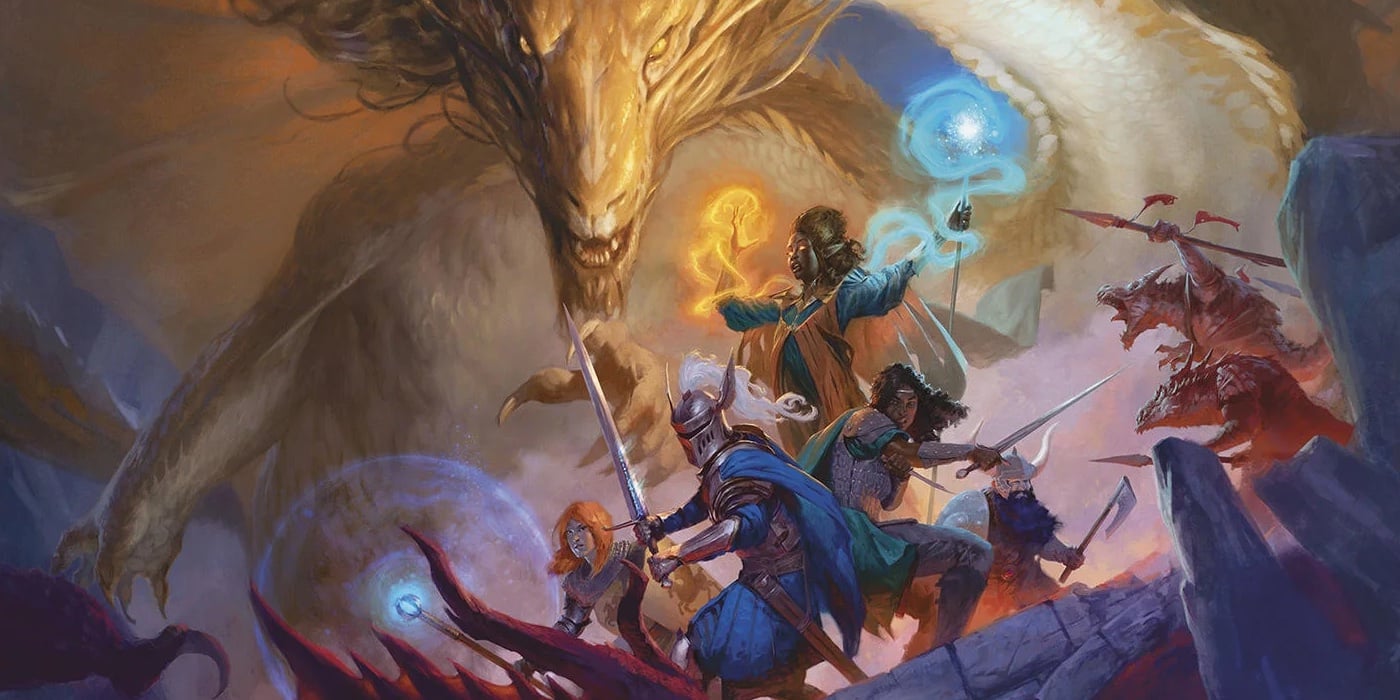D&D Character Sheets – Getting To Know Your Way Around
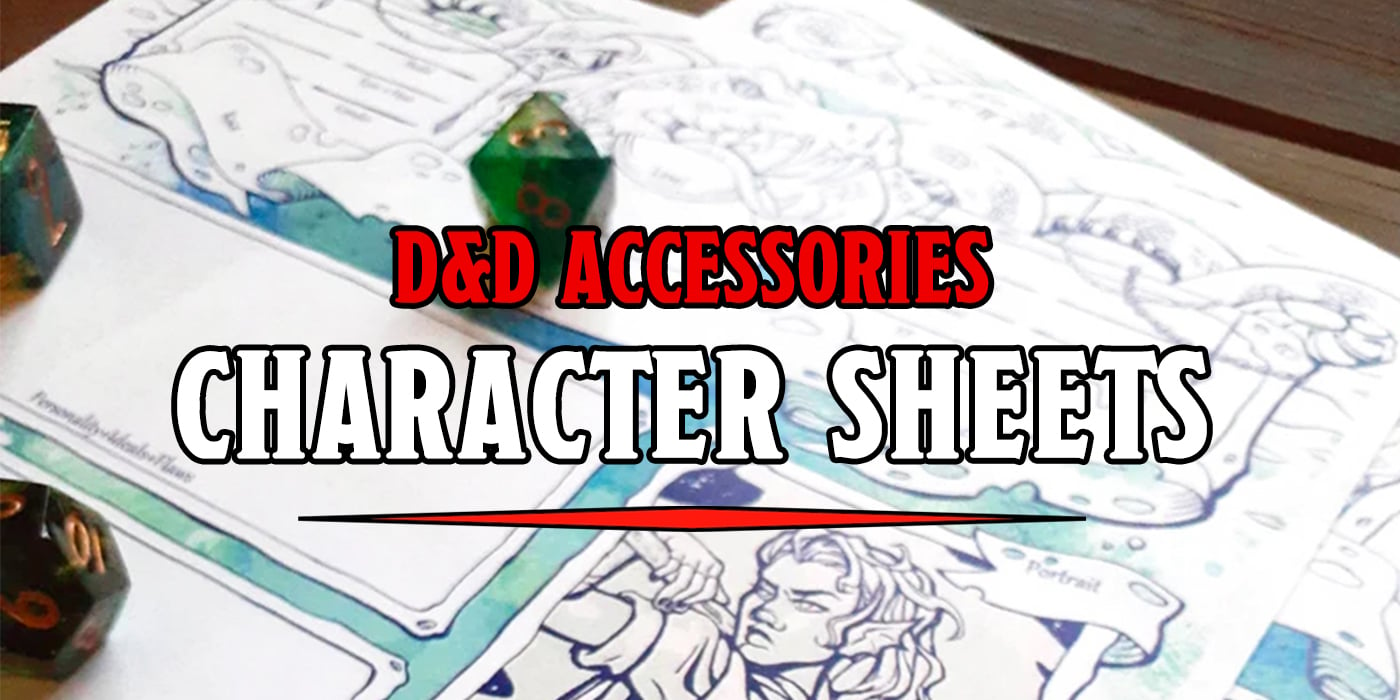

If it works for you, there’s no wrong way to keep a D&D character sheet. But there are a ton of right ways and a couple of very pretty ways, too.
Your D&D character sheet should tell you everything you need to know about your Dungeons and Dragons character. From the most basic information to the specifics of their attacks, motivations, and backstory, the character sheet is your in-game home base.
They’ve changed slightly over the years with the game, but the basics have always been the same since day one. How to turn those stats into playable actions and attacks has evolved since the first edition. But the core has been the same forever. So let’s take a look at the standard we’ve been using since 5th Edition was debuted in 2014, and then talk about the upcoming changes we can look forward to.
The Basics of Your D&D Character Sheet
Besides your character’s basic information, there are a lot of important details and blank spots to fill in on your D&D character sheet. Let’s break down what everything is and what it all means.
At the very top, you’ll see your character’s basic information; their name, race (or species), class (or job), and D&D alignment (basically how good, bad, or neutral they are). Sometimes, the class you want to play will help narrow down what race you pick. Sometimes, that happens in reverse. Other times still, you’ll pick two things based on what sounds fun to you, regardless of how powerful the combo is on paper. In D&D there are very few wrong ways to play the game as long as you’re having a good time.
The next things you’ll want to fill out are your character’s Ability Scores and Ability Score Modifiers. On the sheet above you can see those lined up vertically to the far left. Ability Scores describe in practical terms how good your character is at various base skills.
Some are fairly obvious; for example, Strength describes how strong your character is. Dexterity quantifies how good they are at zipping around and dodging. But some are a little more difficult. Intelligence and Wisdom describe book smarts versus street smarts and emotional intelligence. Constitution is your character’s basic ability to take a punch or handle poison. Finally, Charisma will help them talk to others, both to sweet talk and impress and to threaten alike.
Each of these scores comes with an Ability Score Modifier as shown on the chart above. So a character with a very high Intelligence of 20 would get an extra five points added to any roll challenging their ability to understand a dense tome, while a character with a Strength of 1 would have 5 points taken away from a roll determining how easily they lift a large rock.
Your Skills are seated next to your Ability Scores. This is convenient because each Skill is based on one of your six Ability Scores for quick referencing. Skills are by-and-large self-explanatory and break down the capabilities of your Ability Scores further. For example, Acrobatics would allow your character to do a summersault, and a character with a higher dexterity would have an easier time with this Skill.
Breaking Down Your Character Sheet Further
Now that we’ve discussed all of the basics, we can move on to some of the most fun aspects of your sheet, and each has its own designated spot.
Below your Ability Scores and Skills are the Proficiencies and Languages. There’s a good chance that your character is multilingual. But this is also the spot for all of their random little skills. For example, Darkvision would be listed here, as would the weapons their best with.
To the right of that is your Equipment. This is a place to list your tools, weapons, clothing, gold, and anything else your character may be carrying.
Above Equipment are your Attacks. Unarmed strikes like punches would go here, as would any weapons you carry and plan to use. The box has a place to write everything you’ll need to know about the weapons, including how much damage they’ll do. I know this box also lists “spellcasting,” but there’s a better place for your spells. We’ll get to that in a bit.
Finally, all the way to the right are your Features and Traits. Depending on the Class you choose, you will have different special abilities. And this is where you’ll want to list all of that. For example, at Level 1 Wizards get ‘Spellcasting’ and ‘Arcane Recovery’ which allows them to use magic and regain magic ability through study. Meanwhile, a first-level Rogue gets ‘Sneak Attack’ and the secret language, ‘Thieves’ Cant’.
Speaking of Spells…
Not all Classes can cast spells. But for those who can, the Spell Sheet is a must. It keeps track of every spell you currently have access to as well as how many spells you can cast without taking a rest. The strength of various spells is described in ‘Levels’ and higher level spells require a higher level of the character. Cantrips are the easiest spells and are often considered Level 0.
The New 5E Character Sheets
It’s a lot of the same, but also a lot of different. Each ability score has its corresponding skills close by for easy referencing and easier sheet making with intuitively placed spots for your proficiency bonus and inspiration. Because we’ve all forgotten about inspiration from time to time; having it clearly markable on the front of your sheet makes a lot of sense.
But that’s not all of the grouping that will be making sheets easier to look at. Armor Class, Hit Points, and Death Saves are all lined up so they’re quick to reference at once mid-battle. Feats and species traits also have their own boxes now, when they were previously wedged in with the one bit “Features and Traits” box.
These sheets also uses a lot of check boxes. What kinds of armor can you use? Check any that apply. Do you have inspiration or a shield? Check them off.
We can’t see the entire spell sheet yet, but it looks like it is also very check-box heavy. Which makes a lot of sense if you’ve ever used a personal spell-slot tracker. Most of them are just other items that let you check and mark your remaining spells. Concentration, Ritual, and Materials are also checkable, along with a spot for notes. Unfortunately, spells are always bit wordy and complex, so I don’t think this will do away with the need for spell cards or the notes section referencing a book and page number.
Alternative D&D Character Sheets
There are lots of options out there for D&D character sheets, and I’m sure more will be coming out with the new sheet design. You can use the standards that come in the back of the Player’s Guide or with the starter sets, you can download an app, you can use a blank sheet of lined paper, and hope you remember how to keep everything straight… Or, you can go with something specialized or pretty. If you’re looking for something a little more interesting and unique, check out some of the sheets below. As always, links to shops are in the item titles.
1. Fifty NEW Character Sheets in One Place

Do you play a ton of Dungeons and Dragons? Are you in multiple games per week with another friend pitching a campaign as we speak? Or maybe you just erase holes through sheets and find yourself replacing them a lot. This pack of fifty-character sheets will keep you going for a long while. Ten pages for each sheet give you plenty of space for notes, sketches, skills, and equipment. Most importantly though, this is for the new sheets. So if you’re excited for a whole new way to organize your characters, pre-order this 50 pack.
2. Beautiful Character Sheets
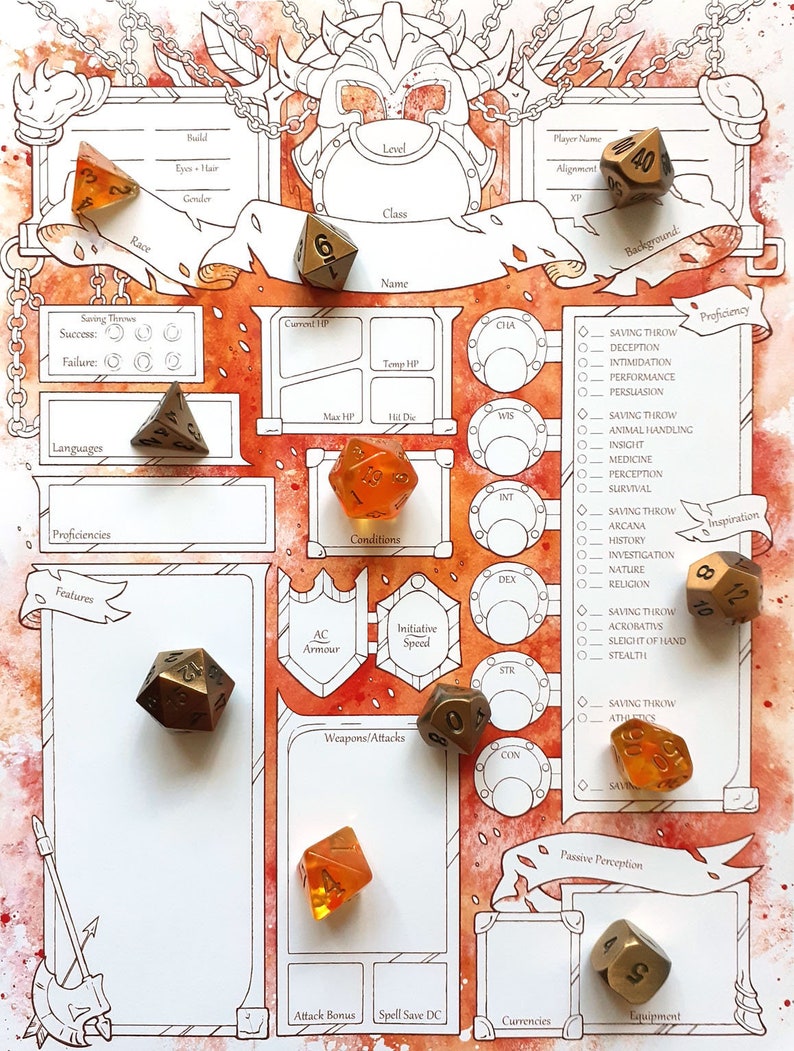
If you want a D&D character sheet that looks cool without all of the very customized bells and whistles of a personal illustration this downloadable PDF set is the way to go. The sheets are cool as heck with beautiful color schemes and adventuring decorations around the borders with shield-shaped fillable bubbles. The four full pages include space for everything you could possibly need. Plus, it’s a PDF so you can print out as many sheets as you have characters.
3. Silicone Mat Sheets

If you’re the kind of player who likes to scribble all over their sheet and easily erase it, silicone sheets may be the answer for you. Durable, rollable, and erasable with a damp cloth, silicone sheets will last through many sessions and work just as well for every character you’ll ever play. Plus, if you find an overhead projector from a 90s classroom you can give a quick presentation on your character.
4. Class-Specific Character Sheets
I’ve used these D&D character sheets by DM’s Guild, and I honestly love them. They’re the closest to the (old) standard sheets. But they’re customized with all of that class information that I don’t want to copy out of the book or continuously reference throughout a typical game session. Tailored to each class, these sheets are extraordinarily useful and intuitive.
5. Character Notebook

Some people like to have an entire, beautiful notebook dedicated to D&D. It makes sense. Your game has been going on forever, and you’ve met hundreds of people and encountered countless plot clues. You have notes to take. For that player, an entire notebook with built-in character sheets will have you looking like the most organized person at the table. Designated spots for backstory, personal info, inventory, features, and black space will make sure you never forget a game detail.
What do your D&D character sheets look like? Pretty and fun? To the point and utilitarian? Just a bunch of random notes on notebook paper and a shrug emoji? It’s okay, we’ve all been there, don’t ask me about what my GURPS sheets used to look like in college. Maybe this will inspire you to switch up your character sheet game or even just treat yourself to some custom character art.
Happy adventuring!

